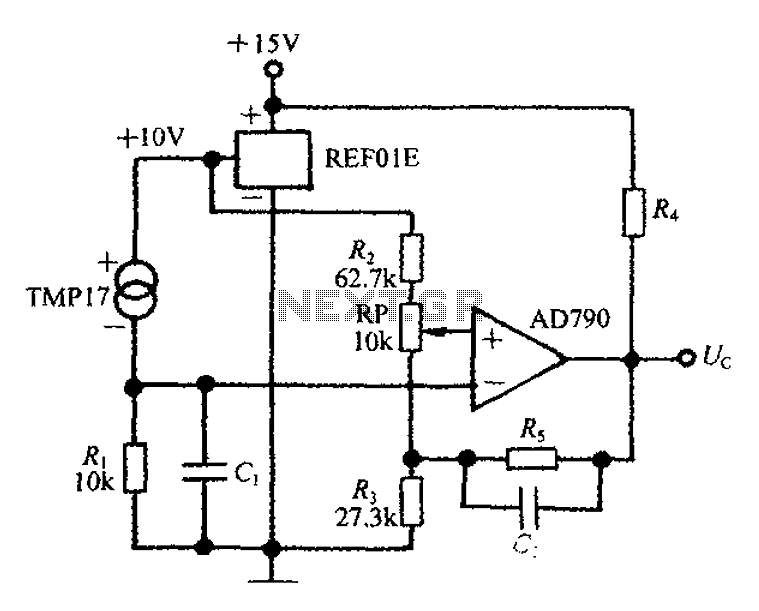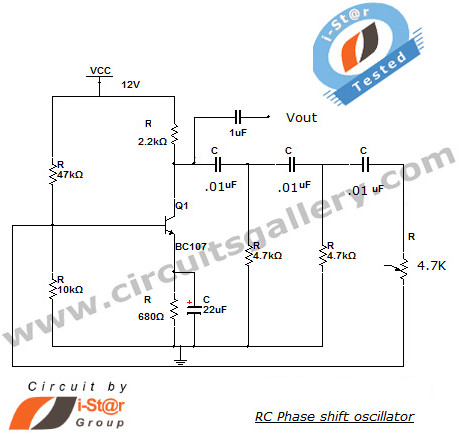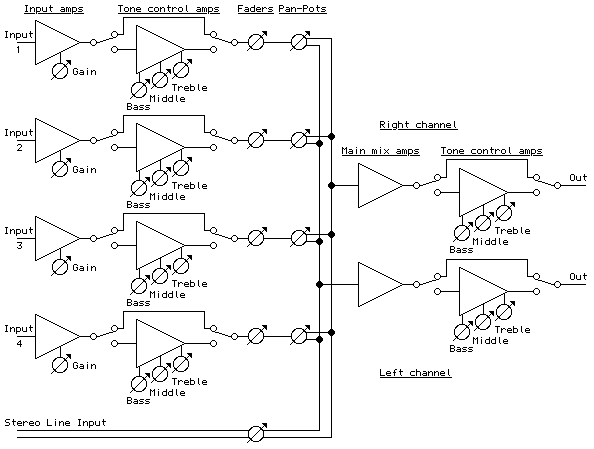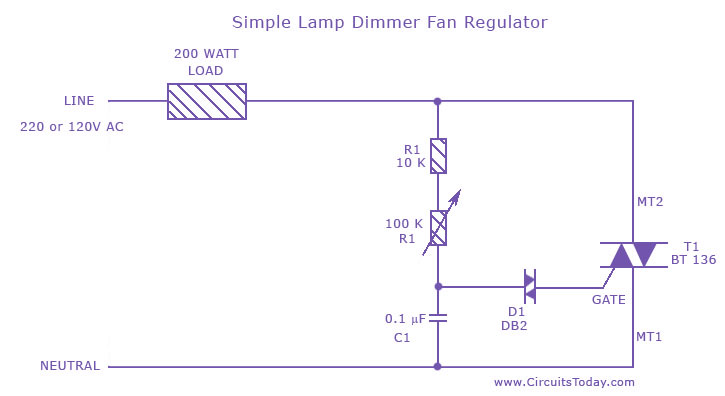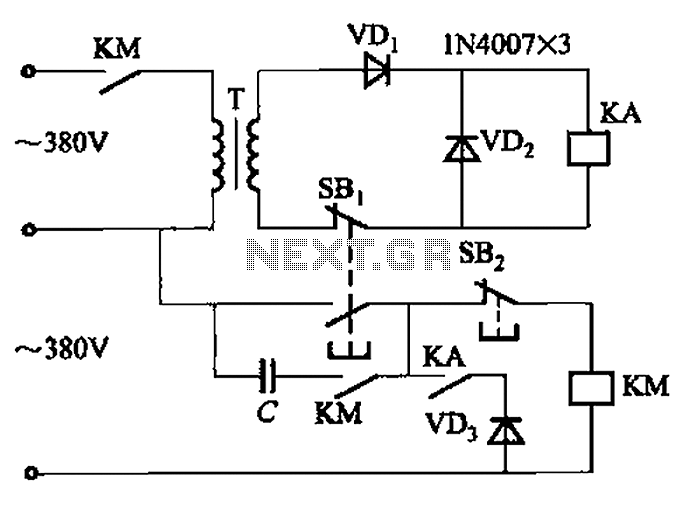
Electronic Combination Lock Circuit using IC LS 7220
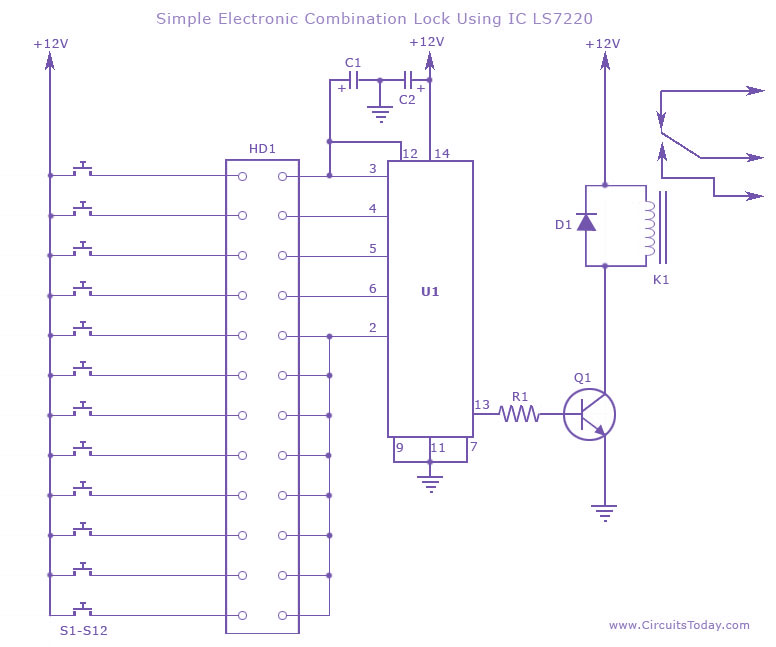
This circuit diagram illustrates a simple electronic combination lock utilizing the IC LS7220. It is designed to activate a relay for controlling any device (on & off) when a specific combination of four digits is entered. The circuit operates within a voltage range of 5V to 12V. To set the combination, connect the designated switches to pins 3, 4, 5, and 6 of the IC. For example, if switch S1 is connected to pin 3, S2 to pin 4, S3 to pin 5, and S4 to pin 6, the combination will be 1234, allowing for the creation of any four-digit sequence. Additionally, connect the remaining switches to pin 2 of the IC, which will reset the IC if any invalid key is pressed, necessitating the re-entry of the entire key code. When the correct key combination is entered, the output (relay) will be activated for a predetermined duration set by capacitor C1, which is configured for 6 seconds in this example. To extend the activation time, increase the capacitance of C1. For the keypad, arrange the switches in a 3x4 matrix on a printed circuit board (PCB) and label the keys with digits or symbols to enhance security and reduce recognition by potential intruders.
The electronic combination lock circuit utilizing the LS7220 IC is a practical solution for access control in various applications. The IC functions as a digital lock, capable of recognizing a user-defined four-digit code. The power supply range of 5V to 12V provides flexibility in design and application, ensuring compatibility with a wide range of devices.
The four-digit combination is established by connecting switches to designated pins on the IC. Each switch corresponds to a specific digit in the combination, allowing for customizable security codes. The reset function, activated by connecting additional switches to pin 2, enhances security by requiring re-entry of the code upon an incorrect input, thereby preventing unauthorized access.
The relay output is a crucial feature, enabling the control of external devices such as alarms, lights, or locks. The timing of the relay activation is adjustable through the selection of capacitor C1. A capacitor value of 1000 µF, for instance, will yield an activation time of approximately 6 seconds, but this can be modified to suit specific requirements by using capacitors with higher capacitance values.
For the keypad interface, arranging the switches in a 3x4 matrix format optimizes space on the PCB while providing an intuitive user experience. The choice of labeling the keys with symbols instead of numbers further enhances security by complicating unauthorized attempts to guess the combination. This design consideration can deter potential intruders, as the symbols may not be immediately recognizable as numerical inputs.
Overall, this electronic combination lock circuit presents a robust and adaptable solution for secure access control, with user-friendly features and customizable options to meet diverse security needs.This is the circuit diagram of a simple electronic combination lock using IC LS 7220. This circuit can be used to activate a relay for controlling (on & off) any device when a preset combination of 4 digits are pressed. The circuit can be operated from 5V to 12V. To set the combination connect the appropriate switches to pin 3, 4, 5 and 6 of the IC th rough the header. As an example if S1 is connected to pin 3, S2 to pin 4, S3 to pin 5, S4 to pin 6 of the IC, the combination will be 1234. This way we can create any 4 digit combinations. Then connect the rest of the switches to pin 2 of IC. This will cause the IC to reset if any invalid key is pressed, and entire key code has to be re entered.
When the correct key combination is pressed the out put ( relay) will be activated for a preset time determined by the capacitor C1. Here it is set to be 6S. Increase C1 to increase on time. For the key pad, arrange switches in a 3X4 matrix on a PCB. Write the digits on the keys using a marker. Instead of using numbers I wrote some symbols!. The bad guys will be more confused by this. 🔗 External reference
The electronic combination lock circuit utilizing the LS7220 IC is a practical solution for access control in various applications. The IC functions as a digital lock, capable of recognizing a user-defined four-digit code. The power supply range of 5V to 12V provides flexibility in design and application, ensuring compatibility with a wide range of devices.
The four-digit combination is established by connecting switches to designated pins on the IC. Each switch corresponds to a specific digit in the combination, allowing for customizable security codes. The reset function, activated by connecting additional switches to pin 2, enhances security by requiring re-entry of the code upon an incorrect input, thereby preventing unauthorized access.
The relay output is a crucial feature, enabling the control of external devices such as alarms, lights, or locks. The timing of the relay activation is adjustable through the selection of capacitor C1. A capacitor value of 1000 µF, for instance, will yield an activation time of approximately 6 seconds, but this can be modified to suit specific requirements by using capacitors with higher capacitance values.
For the keypad interface, arranging the switches in a 3x4 matrix format optimizes space on the PCB while providing an intuitive user experience. The choice of labeling the keys with symbols instead of numbers further enhances security by complicating unauthorized attempts to guess the combination. This design consideration can deter potential intruders, as the symbols may not be immediately recognizable as numerical inputs.
Overall, this electronic combination lock circuit presents a robust and adaptable solution for secure access control, with user-friendly features and customizable options to meet diverse security needs.This is the circuit diagram of a simple electronic combination lock using IC LS 7220. This circuit can be used to activate a relay for controlling (on & off) any device when a preset combination of 4 digits are pressed. The circuit can be operated from 5V to 12V. To set the combination connect the appropriate switches to pin 3, 4, 5 and 6 of the IC th rough the header. As an example if S1 is connected to pin 3, S2 to pin 4, S3 to pin 5, S4 to pin 6 of the IC, the combination will be 1234. This way we can create any 4 digit combinations. Then connect the rest of the switches to pin 2 of IC. This will cause the IC to reset if any invalid key is pressed, and entire key code has to be re entered.
When the correct key combination is pressed the out put ( relay) will be activated for a preset time determined by the capacitor C1. Here it is set to be 6S. Increase C1 to increase on time. For the key pad, arrange switches in a 3X4 matrix on a PCB. Write the digits on the keys using a marker. Instead of using numbers I wrote some symbols!. The bad guys will be more confused by this. 🔗 External reference
